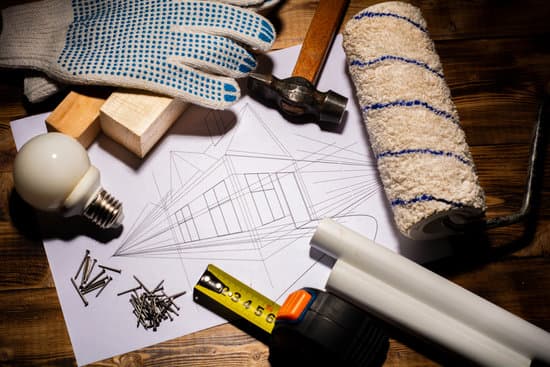Are you considering making improvements to your home but lack the necessary funds? The question “Can you take out a loan for home improvements?” is a common one among homeowners looking to upgrade their living spaces.
From renovating kitchens and bathrooms to adding an extra room or enhancing energy efficiency, home improvements can be a significant investment. In this article, we will explore the different types of loans available for home improvements, eligibility criteria, application processes, and the benefits and risks associated with taking out a loan for these purposes.
Home improvements are not only about enhancing the aesthetic appeal of your property but also about increasing its functionality and value. However, funding such projects can often be challenging. Many people wonder if they can take out a loan specifically tailored for home improvements. Fortunately, there are various loan options available for financing these projects, each with its own set of advantages and considerations.
In the following sections, we will delve into the different types of loans suitable for home improvements, including personal loans, home equity loans, and HELOCs. We will also discuss the eligibility criteria for obtaining these loans and provide tips on increasing your chances of approval.
Additionally, we will address the application process for each type of loan and emphasize the importance of comparing offers from multiple lenders before making a decision. Whether you’re planning minor upgrades or major renovations, understanding your financing options is crucial in embarking on successful home improvement projects.
Types of Loans Available for Home Improvements
When it comes to financing home improvements, there are several types of loans available that can help homeowners achieve their renovation goals. From personal loans to home equity loans and home equity lines of credit (HELOCs), each option has its own pros and cons.
Personal Loans
Personal loans are unsecured loans that do not require any collateral. They are typically based on the borrower’s creditworthiness and income. The advantage of a personal loan is that it provides flexibility in how the funds can be used for home improvements. However, the interest rates on personal loans may be higher compared to secured loans, and the loan amount may be limited based on the borrower’s credit history.
Home Equity Loans
A home equity loan is a type of secured loan where the borrower uses their home as collateral. This type of loan allows homeowners to borrow a lump sum at a fixed interest rate, making it easier to budget for monthly payments. Home equity loans are ideal for large, one-time expenses such as major home renovations. However, failure to repay the loan could result in foreclosure on the property.
Home Equity Line of Credit (HELOC)
A HELOC also uses the home as collateral, but instead of receiving a lump sum, borrowers are given access to a line of credit that they can draw from as needed. HELOCs often have variable interest rates, which means monthly payments can fluctuate. This type of loan is beneficial for ongoing or long-term projects with variable costs, but borrowers need to be cautious about potential interest rate hikes.
Each type of loan offers different advantages and drawbacks, so it’s important for homeowners to carefully consider their financial situation and renovation needs before deciding which option is best for them.
Eligibility Criteria for Home Improvement Loans
When considering whether you can take out a loan for home improvements, it’s important to understand the eligibility criteria that lenders consider when approving such loans. Lenders typically look at factors such as credit score, income, and the value of your home when determining eligibility for a home improvement loan.
Your credit score plays a significant role in whether you can qualify for a home improvement loan. A higher credit score generally makes it easier to qualify for a loan and secure better interest rates. Lenders use your credit score to assess your ability to handle debt and make timely payments.
In addition to credit score, income is another crucial factor that lenders consider. A steady and sufficient income can increase your chances of getting approved for a home improvement loan. Lenders may require proof of income, such as pay stubs or tax returns, during the application process. Additionally, they may calculate your debt-to-income ratio to ensure that you can afford the monthly payments on the loan.
It’s also essential to note that the value of your home can impact your eligibility for a home improvement loan. The value of your home serves as collateral for certain types of loans, such as home equity loans and HELOCs. Lenders may conduct a property appraisal to determine its current value before approving a loan for home improvements.
| Factors | Impact on Eligibility |
|---|---|
| Credit Score | A higher credit score can increase eligibility and secure better interest rates. |
| Income | Steady and sufficient income increases chances of approval; lenders may calculate debt-to-income ratio. |
| Home Value | The value of the home serves as collateral for certain types of loans; lenders may conduct property appraisals. |
How to Apply for a Home Improvement Loan
When it comes to making home improvements, many homeowners may find themselves in need of financial assistance to cover the costs. If you’re wondering, “Can you take out a loan for home improvements?” the answer is yes.
There are several types of loans available specifically for funding home improvement projects. In this section, we will provide a step-by-step guide on how to apply for a home improvement loan and emphasize the importance of comparing loan offers from multiple lenders.
Types of Loans Available:
– Personal Loans: These unsecured loans can be used for a variety of purposes, including home improvements. They typically have shorter terms and higher interest rates compared to other options.
– Home Equity Loans: With this type of loan, homeowners can borrow against the equity in their homes. The funds are disbursed in a lump sum and repaid over a fixed period with a fixed interest rate.
– Home Equity Lines of Credit (HELOCs): Similar to home equity loans, HELOCs allow homeowners to borrow against their equity. However, they work more like credit cards with a revolving line of credit that can be drawn upon as needed.
How to Apply:
1. Determine how much you need: Start by assessing the total cost of your home improvement project and deciding how much financing you’ll require.
2. Check your credit score: A good credit score can improve your chances of qualifying for favorable loan terms.
3. Shop around for lenders: Research different lenders and compare their offerings in terms of interest rates, fees, and repayment terms.
4. Gather necessary documents: Prepare documents such as proof of income, tax returns, bank statements, and information about the property.
5. Submit your application: Complete the application process with the chosen lender and await approval.
Benefits of Shopping Around:
By following these steps and carefully comparing offers from different lenders, you can increase your chances of securing a favorable loan for your home improvement project. It’s important to take into consideration not only the immediate financial impact but also the long-term implications before making a decision. Taking out a loan for home improvements can have numerous benefits but also carries certain risks that should be carefully weighed before proceeding.
Benefits of Taking Out a Loan for Home Improvements
Taking out a loan for home improvements offers numerous benefits that can make the process of renovating or upgrading your home much more feasible and affordable. Whether you’re looking to update your kitchen, add an extra room, or tackle some much-needed repairs, a home improvement loan can provide the financial support needed to make these projects a reality. Below are some of the key advantages of financing home improvements through a loan.
Increased Home Value
Investing in your property through home improvements not only enhances your living space but also increases the overall value of your home. By taking out a loan to make these upgrades, you are essentially investing in the long-term value of your property. For example, remodeling a bathroom or kitchen can significantly boost the appeal and marketability of your home, ultimately leading to a higher resale value.
Flexible Payment Options
Many lenders offer flexible repayment plans for home improvement loans, giving you the freedom to choose terms that align with your financial situation. With options such as fixed-rate loans and HELOCs, you can select a payment plan that works best for you. This flexibility allows homeowners to budget for their renovation projects without straining their finances too much.
Potential Tax Benefits
In some cases, the interest paid on a home improvement loan may be tax-deductible if it meets certain criteria set by the IRS. This tax benefit can be especially advantageous for homeowners seeking financial relief when undertaking larger-scale renovation projects. It’s important to consult with a tax professional to determine if you qualify for any potential tax benefits related to your home improvement loan.
Overall, taking out a loan for home improvements
Risks and Considerations
When considering taking out a loan for home improvements, it’s important to weigh the potential risks and considerations before making a decision. Here are some factors to keep in mind:
- Interest Rates: One of the main risks of taking out a loan for home improvements is the interest rates. Depending on the type of loan you choose, interest rates can vary and significantly impact the total amount you’ll end up paying back. For example, personal loans tend to have higher interest rates compared to home equity loans or HELOCs. Comparing different loan offers from lenders can help you find the most favorable terms.
- Budgeting: It’s crucial to carefully assess your financial situation before taking on additional debt for home improvements. Taking out a loan means committing to monthly payments, which can strain your budget if not carefully planned. Create a detailed budget that includes the cost of the loan repayment along with other expenses to ensure that you can comfortably manage the financial commitment.
- Home Equity Risk: If you opt for a home equity loan or HELOC, using your home as collateral poses a risk. In case of financial hardship or unforeseen circumstances, there’s a possibility of losing your home if you’re unable to make payments on time. It’s essential to evaluate whether the potential benefits of the home improvements outweigh this risk and whether there are alternative financing options available.
Mitigating these risks and considerations involves thorough research and careful planning. Seeking advice from financial advisors and exploring various loan options can help in making an informed decision. Additionally, being proactive in improving your credit score and reducing existing debt can increase eligibility for better loan terms and minimize financial strain in the long run.
Ultimately, weighing these risks alongside potential benefits is crucial when contemplating whether to take out a loan for home improvements.
Alternatives to Loans for Home Improvements
When considering home improvements, it is essential to explore various financing options. While taking out a loan for home improvements can provide the necessary funds, there are also alternative methods to consider. Understanding these alternatives can help homeowners make informed decisions about how to finance their renovation projects.
One alternative to loans for home improvements is using credit cards. However, it’s crucial to note that credit cards often come with higher interest rates compared to traditional loans. Additionally, not everyone may have a high enough credit limit on their cards to cover the cost of extensive renovations.
Another alternative is utilizing personal savings to fund home improvement projects. Saving up money beforehand allows homeowners to avoid taking on additional debt and interest payments. However, this approach requires discipline and patience as it may take time to accumulate the necessary funds.
Government assistance programs are also available as an alternative for financing home improvements. These programs can provide financial aid or low-interest loans specifically for making energy-efficient upgrades or addressing health and safety issues in the home.
It’s important for homeowners to carefully evaluate each alternative and determine which option aligns best with their financial situation and renovation needs.
| Alternative | Credit Cards |
|---|---|
| Interest Rates | Higher than traditional loans |
| Credit Limit | May not be sufficient for extensive renovations |
Conclusion
In conclusion, the decision to take out a loan for home improvements can be a significant financial commitment that should not be taken lightly. As detailed in this article, there are various types of loans available for home improvements, each with its own set of pros and cons. It’s important for homeowners to carefully consider their options and weigh the potential benefits against the risks before making a decision.
While personal loans offer flexibility and quick access to funds, home equity loans and HELOCs may provide lower interest rates and tax-deductible interest payments. However, it’s crucial for homeowners to understand the eligibility criteria for these loans, as well as tips on how to increase their chances of approval. Additionally, comparing loan offers from multiple lenders is essential in order to secure the most favorable terms.
Ultimately, financing home improvements through a loan can yield long-term benefits such as increasing the value of the home and improving quality of life. However, it’s important to be mindful of the potential downsides and risks associated with taking on additional debt.
Homeowners should also explore alternative financing options such as credit cards, savings, or government assistance programs before committing to a loan. In doing so, they can make an informed decision that aligns with their financial goals and circumstances.
Frequently Asked Questions
Are Renovation Loans a Good Idea?
Renovation loans can be a good idea for homeowners who want to update or improve their property but may not have the upfront cash to do so. It allows them to finance the renovations, potentially increasing the value of their home.
What Is the Difference Between a Home Loan and a Home Improvement Loan?
The main difference between a home loan and a home improvement loan lies in their purpose. A home loan is used to purchase a new home or refinance an existing mortgage, while a home improvement loan is specifically for making improvements or renovations to an existing property.
What Is the Minimum Credit Score for a Home Improvement Loan?
The minimum credit score required for a home improvement loan can vary depending on the lender and the type of loan being sought. Generally, a FICO score of 620 or higher is recommended, but some lenders may accept lower scores depending on other factors such as income and employment history.

I’m thrilled to have you here as a part of the Remodeling Top community. This is where my journey as an architect and remodeling enthusiast intersects with your passion for transforming houses into dream homes.





